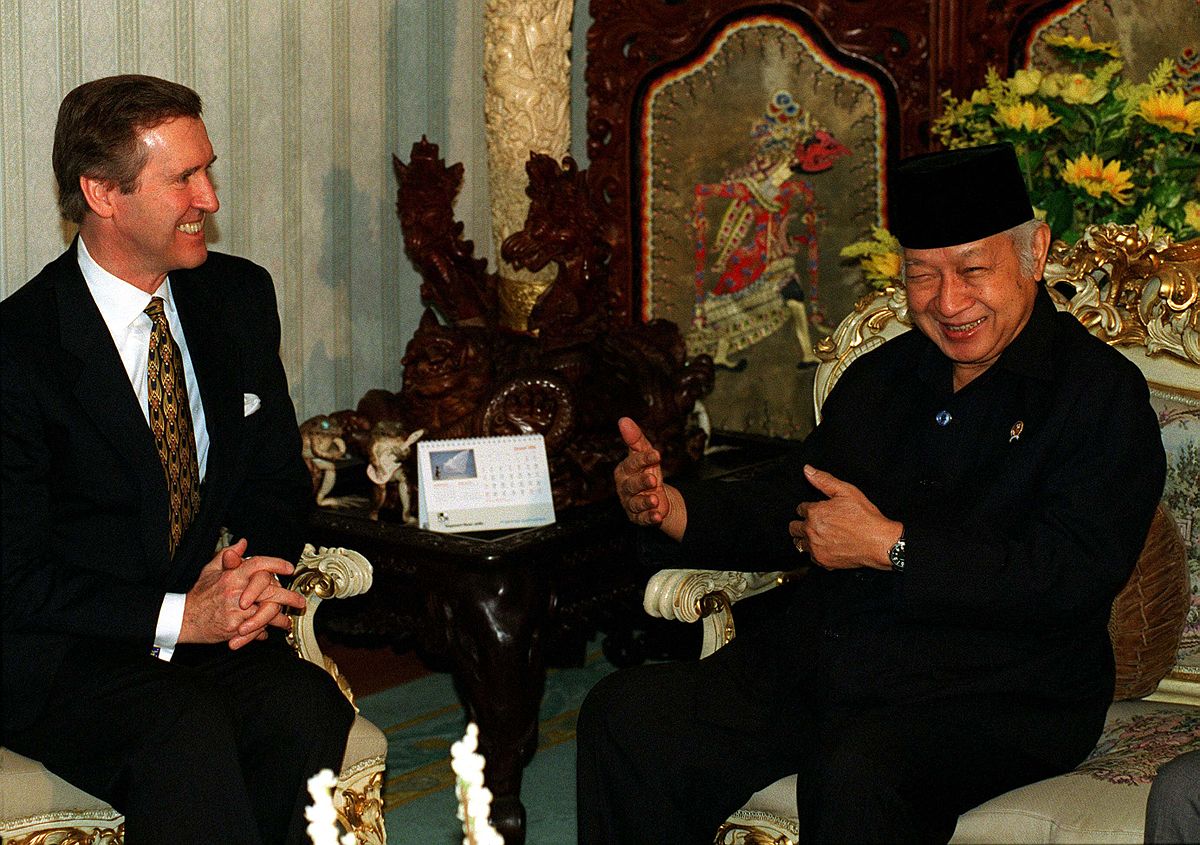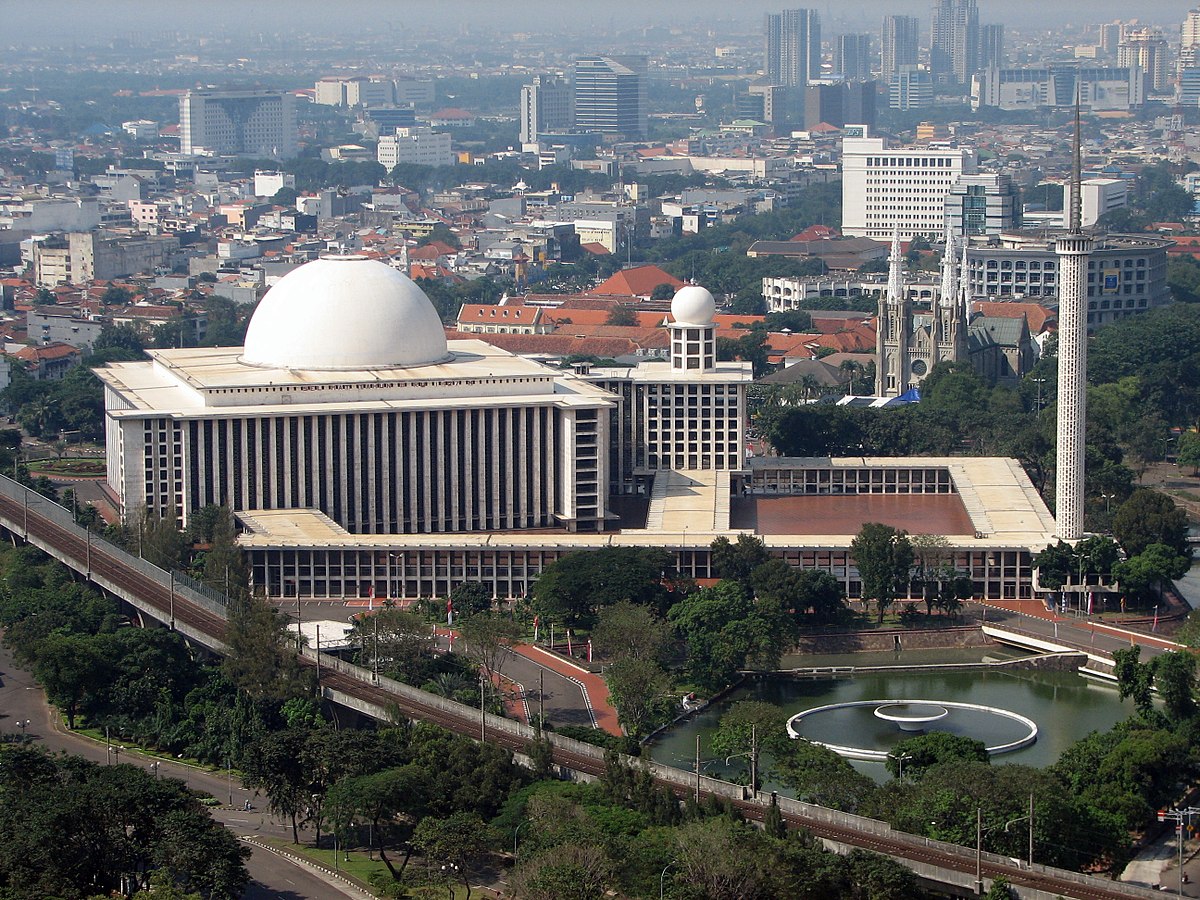
Although Islamist movements are not new in Indonesian history, Islamist mobilization become more noticeable on the country’s political stage after the late President Suharto stepped down in 1998. For the Islamists, the end of Suharto’s authoritarian regime provided impetus to express their religious, cultural, ideological, political and economic interests.
Although there have always been multiple factors that contribute to the rise of Islamist movements in the post-New Order Indonesia, the demise of the Suharto regime has been critical. The fall of Suharto opened the doors to civil liberty, democracy and civic pluralism, but a side-effect of this has been the growth of intolerance, radicalism and Islamic militancy.
Despite notable social, political, and economic developments, post-Suharto Indonesia has also been bedeviled by the influx of local and transnational Islamist groups that have challenged Indonesia’s nascent democracy and fragile pluralism, as well as the image of Indonesian Muslims as tolerant and moderate when compared to their co-religionists in central Asia, the Indian subcontinent, or the Middle East. As a result of the growth of these Islamist groups, the modernist and liberal views of moderate and progressive Muslims are increasingly challenged and even rejected.
Indonesian democracy, hence, provides room for the Islamists to flourish. In the name of freedom and democracy, a variety of Islamist groups have established Islamic centers, organizations, schools, and even political parties across the archipelago. They freely produce Islamic books and other publications (and distribute them to the society through their extensive networks) that are in line with their Islamic ideas, interpretations, and understandings, as well as their socio-political agenda. Although these groups thrive in a democratic system, they paradoxically use these Islamic institutions to disseminate intolerance, ethnocentrism and anti-pluralism, as well as to oppose democracy, which they criticize as a Western secular product.

Multiple Types of Islamist Groups
It is imperative to underline that not all Islamist groups commit physical violence, and it is a mistake to claim that Islamist mobilizations always takes violent or radical form. Much as certain sects of Judaism and Christianity push their adherents to improve personal piety, many Islamic revivalist movements encourage Muslims to become more observant.
Peaceful or less-violent Islamist mobilizations may comprise the following actions: forming political parties, contesting elections, establishing alliances, developing state–civil society partnerships, and starting civil society organizations. It also may consist of working with government agencies to espouse Syariah–based policies. Violent or radical Islamist mobilizations may include attacks on property, acts of intimidation, or targeting individuals or groups that oppose the Islamists’ goals or strategic choices, minority religious sects, minority ethnic groups, and certain segments of the population, as well as rioting, civilian unrest, communal violence, or rebellion.
Examples of non-violent Islamists include Tablighi Jamaat, Hizbut Tahrir Indonesia, or some Salafi (or neo-Salafi) groups, while organizations such as Front Pembela Islam (Islamic Defenders Front), Laskar Jihad (Jihad Forces), Majelis Mujahidin Indonesia (Indonesian Jihadist Council), Forum Umat Islam (Islamic Umma Forum), Jamaah Ikhwanul Muslimin Indonesia (Association of Indonesian Muslim Brotherhood), and Koalisi Nasional Anti-Syiah (Anti-Shia National Alliance) can be categorized as violent, radical Islamist groups.
Much literature on Indonesia’s Islamist movements puts emphasis on the destructive roles of the violent, radical Islamist groups. Only a handful scholars that dedicated to the study of less-violent Islamist movements.
Jakarta’s Islamist Mobilizations during Gubernatorial Election
Jakarta’s 2017 gubernatorial election was one of the most controversial of the post-Suharto era. It was so because the election was preceded by a series of violence, tension, uproar, terror, hatred, intimidation, racism, ethnocentrism, and mobilization of sectarian sentiments by multiple Islamist groups.
In the first round of the election, the Islamists’ support was divided between Anies Baswedan (Anies), of Arab Hadrami origin, and Agus Harimurti Yudhoyono, the son of former Indonesian president Soesilo Bambang Yudhoyono. However, in the second round (Agus lost in the first round), they were all united against the incumbent candidate Basuki Tjahaja Purnawa (known by his nickname Ahok, a Christian–Chinese) and his running mate Djarot Saiful Hidayat (Djarot). 1
Although tensions between supporters of the candidates were evident before the first round of the election, the fierce conflict and competition took place in the second round which pitted Anies against Ahok. Concerned that their candidates (Anies and his running mate Sandiaga Salahuddin Uno, who is known by his nickname Sandi, a businessman) would lose, Islamists mobilized and intimidated Jakarta residents through various means: mass rallies, public gatherings, religious sermons, Friday sermons, billboards, posters, and social media, among others. Islamist and their political allies who backed Anies-Sandi routinely mobilized ordinary masses and “cheerleaders” of Islamism for marches, Friday sermons in town squares, prayers in carriageways, and various public meetings. Islamist clerics provided doctrinal underpinnings to this mobilization by using Qur’anic texts and Islamic discourses to provide theological and religious basis for the support for Anies. Through religious sermons, they regularly preached that, for Muslims, selecting a Muslim (i.e. Anies) as their political and governmental leader is compulsory (wajib), and it is unlawful (haram) to choose a non-Muslim (i.e. Ahok).
Islamist leaders, furthermore, used (or misused) mosques, Islamic centers, television channels, and other means to intimidate Muslims saying that those who choose Ahok would enter Hell after the death. They also threatened Muslims by saying that they would not pray for nor bury the bodies of those who supported Ahok. Worst yet, Islamists terrorized Jakarta residents, threatening that if Ahok won the election they would transform Jakarta into “hell” by attacking Chinese, Christians, and Ahok supporters. They routinely warned people of the “May Tragedy” in Jakarta in 1998 when the Chinese population became target of violence by angry mobs (Kingsbury 2005; Sidel 2006). Worth noting is the fact that various Islamist groups which hitherto had their own differences with each other were suddenly united in opposition to Ahok who they saw as the “common enemy of Islam”, despite the fact that Ahok’s running mate, Djarot, is a devout Muslim.
In the event, these Islamist mobilizations proved successful when Anies eventually defeated Ahok by winning 57.95% of the votes (Ahok won 42.05%). Several post-mortems suggest a great number of Jakarta residents, particularly Muslims, did not cast votes for Ahok especially in the second round because they: (1) were afraid of the recurrence of anti-Chinese / Christian riots, (2) feared for breaking the rules of the Qur’an and God’s punishment, (3) were worried that if they or their family members died, no one would pray for and bury their bodies, and (4) wanted to obey the “Qur’anic injunction” that required the faithful to support Muslim candidates for political leadership. It was evident that religion and Islamic identity mattered in the Jakarta gubernatorial election.
Factors of Jakarta’s Radical Islamist Mobilizations
According to media reports, a major rallying point for Islamists in the Ahok controversy was an allegation of blasphemy. This allegation was based on a video edited and uploaded by Buni Yani, a supporter of Anies Baswedan, on social media which conveyed the impression that Ahok had deliberately misquoted the Qur’an. The video catalyzed widespread protests among large segments of the Muslim community, and prompted calls for his arrest on charges of blasphemy (for which he was eventually convicted and sentenced to imprisonment for two years).
However, it is incorrect to state that the Ahok’s speech was the main reason for the Islamist mobilization, for Islamist resentment against the incumbent was already building up prior to the controversy. Recognized as an effective if somewhat abrasive governor, Ahok’s focus on governance, anti-corruption and pluralism ran athwart local political and business interests that eventually joined forces with Islamists to undermine and eventually challenge him. Their campaign to unseat Ahok was predicated on: (1) mobilizing Muslims to defend the faith (2) conducting mass rallies, (3) creating a sectarian mood with hate speeches, (4) abusing mosques for political purposes, (5) interpreting religious texts and discourses to justify their agenda, and (6) bribery.
In other words, radical Islamist mobilization proved a medium to pursue economic-political-ideological aims. Islamic narratives and ethnic identity were tools used in service of political interests.

Indonesia is not only Jakarta
However, it is imperative to underline that developments surrounding the Jakarta gubernatorial elections should not be seen as representative of patterns of growing religiosity in Indonesian society. For a start, there were significant numbers of Chinese and non-Muslims who voted for Anies, just as there were Muslims who voted for Ahok. Furthermore, there were 101 regions (provinces, districts or municipalities) across Indonesia that conducted direct elections for governor, resident or mayor in 2017, yet it was only Jakarta that witnessed the “unholy alliance” between radical Islamists and political and business interests stoke the flams of secularism for purposes of mobilization to advance their own agendas. Such mobilization was noticeably absent in other contests that featured non-Muslim and ethnic Chinese candidates, such as Singkawang, Ambon, Landak, Kupang, Bolaang Mongondow, Maluku Tenggara Barat, Seram Bagian Barat, Maluku, West Papua, and many others 2
The point is that in these other contests, the majority of the electorate voted not on the basis of religious or ethnic identity but on the candidate’s track record, quality, credibility, capacity and capability. Some non-Muslims in several regions (e.g. Solo, Ambon, Landak, West Kalimantan, and others) even succeeded in winning elections. In the district of Singkawan of West Kalimantan, in particular, a non-Muslim Chinese woman, Tjhai Chui Mie, won the municipal election. Even in Jakarta, there was a great number of Muslims, especially those linked with Nahdlatul Ulama, the country’s largest Muslim organization, nationalist political parties and organizations, as well as numerous middle class Muslim groups that opposed radical Islamist mobilization for gubernatorial elections.
Mention should also be made of the fact that across Indonesia, considerable numbers of Muslims have mobilized to oppose the presence and activities of Islamist groups and to reject efforts by extremist preachers seeking an audience in their respective communities. Instead, these civil-pluralist democratic movements, championed by moderate, nationalist and traditionalist Muslim groups, labour throughout the country to raise public awareness about how Islamism undermines the Indonesian Constitution and the state ideology of Pancasila. As a result of this, the Indonesian government has enacted legislation to curb the activities of Islamist groups. 3
All this is to say that while the Jakarta gubernatorial elections might be a setback, there is hope yet for “civil Islam” in Indonesia that celebrates diversity, tolerance, democracy, and pluralism. To be sure, conservative Islamist forces are hardly a new phenomenon in Indonesia. Yet it is also true that Islamists have always struggled to advance their agenda, whether via elections, social mobilization, or the use of violence. This is because in Indonesia, the Islamist agenda runs up against the history, traditions, and cultures of Indonesian society that favour peace and tolerance, and that celebrates religious diversity.
Sumanto Al Qurtuby
Department of General Studies, King Fahd University of Petroleum and Minerals
Dhahran, Saudi Arabia
Bibliography
Burhani, Ahmad Najib. 2017. “Ethnic Minority Politics in Jakarta’s Gubernatorial Election,” Perspective No. 39: 1–6.
Hatherell, Michael and Alistair Welsh. 2017. “Rebel with a Cause: Ahok and Charismatic Leadership in Indonesia,” Asian Studies Review 41 (2): 174–90.
Kingsbury, Damien. 2005. Violence in Between: Conflict and Security in Archipelagic Southeast Asia. Australia: Monash Asia Institute.
Sidel, John T. 2006. Riots, Pogroms, Jihad. Religious Violence in Indonesia. Ithaca, NY: Cornell University Press.
Notes:
- Anies was nominated by Gerakan Indonesia Raya or Gerindra for short (i.e. Great Indonesia Movement Party, founded by ret. Lieut. Gen. Prabowo Subiyanto) and the Islamist political party Partai Keadilan Sejahtera (Welfare and Justice Party), while Ahok was nominated by the nationalist political party Partai Demokrasi Indonesia Perjuangan (Indonesian Democratic Party of Struggle, headed by former president Megawati Soekarnoputri). ↩
- Indonesian General Elections Commission (Komisi Pemilihan Umum) listed at least 22 regions during the 2017 election where non-Muslim run for candidacy. See http://kbr.id/berita/02-2017/ini_22_pasangan_calon_kepala_daerah_nonmuslim_yang_diusung_partai_islam/88775.html. Access 10 October, 2017. ↩
- The Indonesian government, for instance, has issued a regulation (e.g. Perppu No. 2/2017) that bans any organizations and social groups (especially Islamist ones) whose platform, objectives and agenda contradict with the Indonesian state ideology and Constitution. ↩
